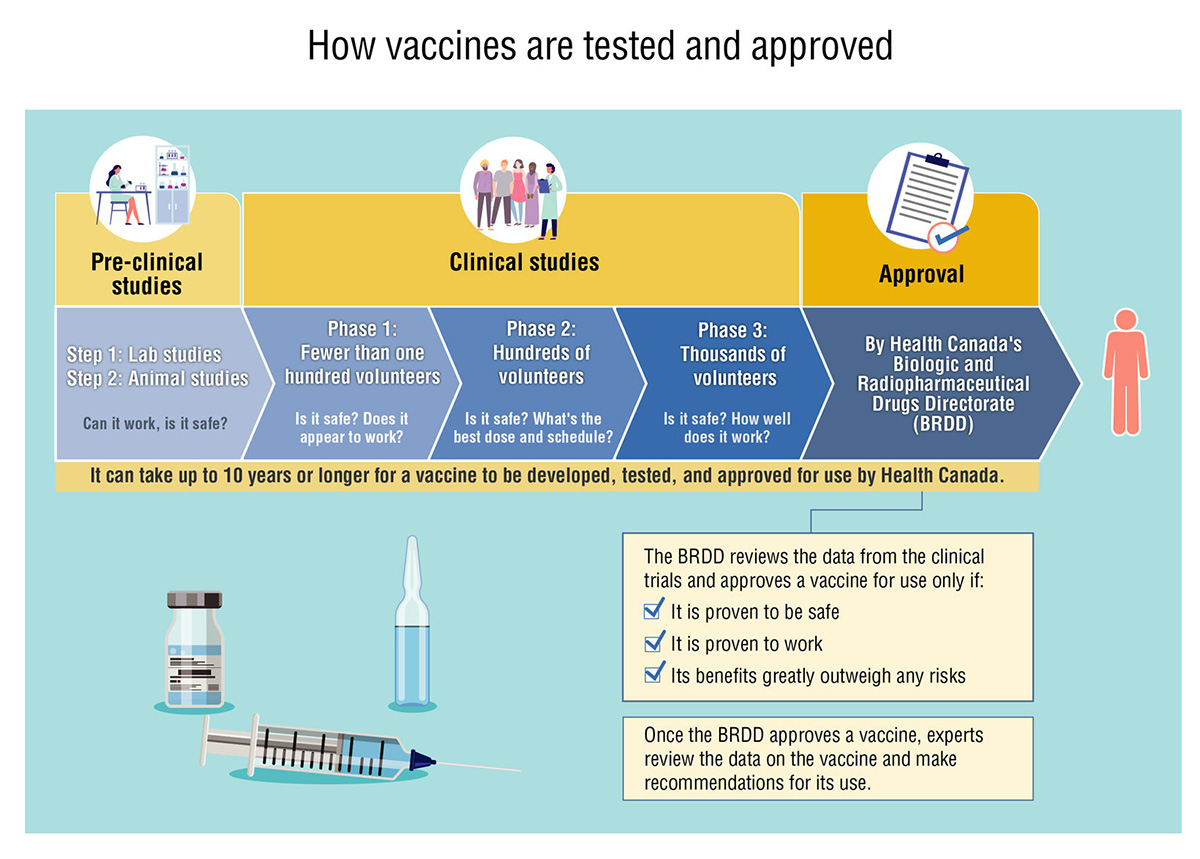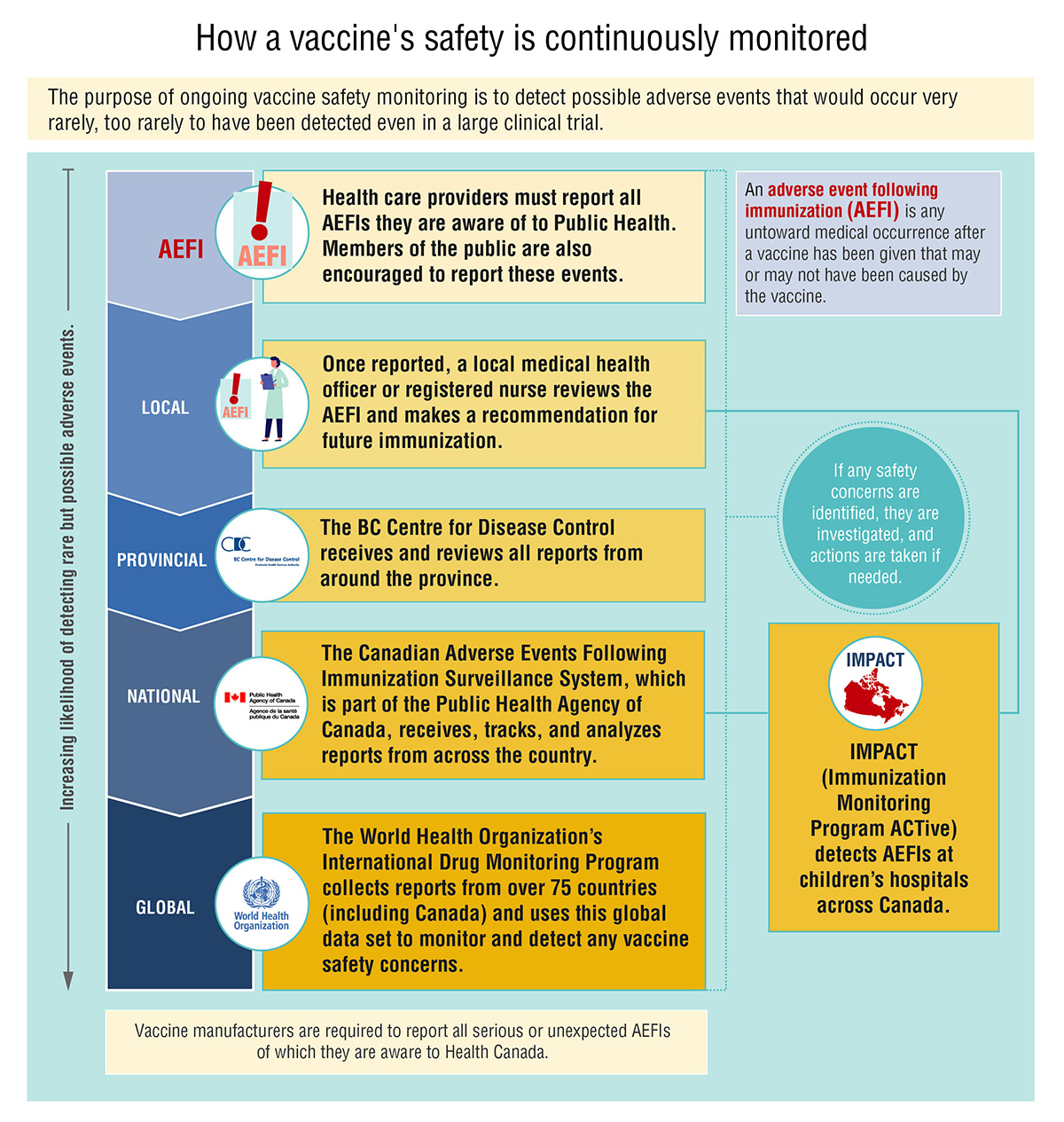On this page:
- How vaccines are tested
- Vaccine approval
- Vaccine safety monitoring
- How vaccine safety is monitored in Canada
- Vaccine Safety and the IMPACT Surveillance System
- Mandatory reporting by vaccine manufacturers
- Vaccine Vigilance Working Group (VVWG)
- Determining if an adverse event was caused by the vaccine
- Video
How vaccines are tested
Did you know?
Vaccines are among the most strictly regulated medical products in Canada. All vaccines go through an in-depth testing process and must be shown to be safe and effective before being approved for use in Canada.
- Vaccine safety.
- The immune response to the vaccine.
- Vaccine efficacy (how well the vaccine prevents the disease).
Vaccine approval

Vaccine safety monitoring
Once a vaccine has been approved for use, its safety continues to be monitored. Ongoing vaccine safety monitoring is essential for the detection of and quick response to vaccine safety concerns.
The purpose of continuing to monitor for vaccine safety after a vaccine has been approved is to detect possible adverse events following immunization (AEFIs) that:
- Occur at a higher frequency level than expected based on clinical trials or historical experience.
- Occur very rarely, too rarely to detect even in a large clinical trial. When millions of people receive a vaccine, rare side effects may be recognized.
What is an adverse event following immunization (AEFI)?
How vaccine safety is monitored in Canada
Vaccine safety is also monitored at the international level. The World Health Organization’s International Drug Monitoring Program collects reports from over 75 countries (including Canada). It uses this global data set to monitor for any vaccine safety concerns.
